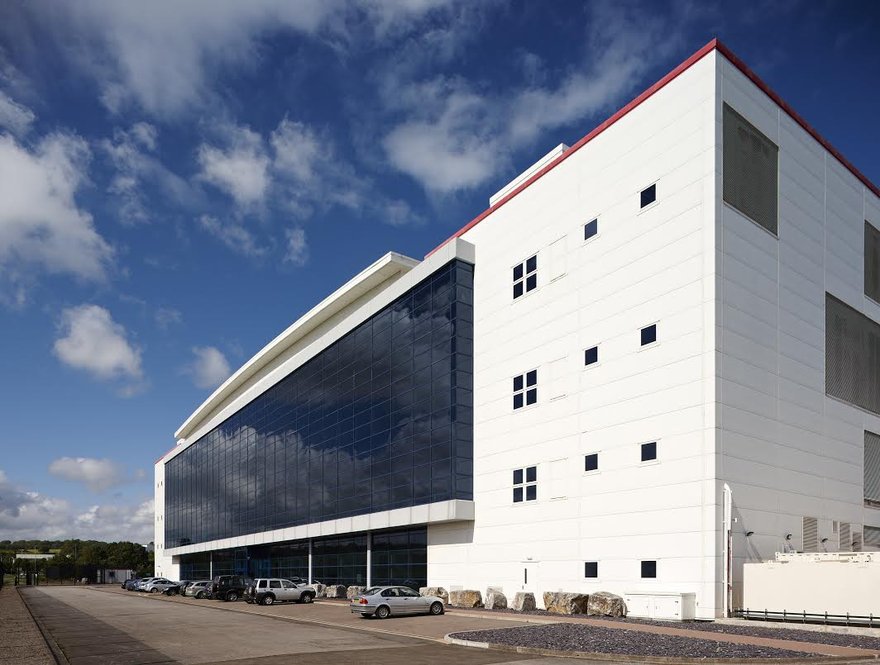Next Generation Data (NGD) claims it is the first data center operator in the world to guarantee clients a perfect power usage effectiveness (PUE) ratio, thanks to a rooftop solar farm which powers its passive cooling systems. Analysts have criticised the claim as greenwash.
NGD claims it can contractually commit to offering customers a PUE of 1.0 at its Newport (Wales) facility, through a combination of sustainably sourced mains power and free cooling systems run on solar power. Working with utility npower, it has installed a rooftop solar panel farm at the ts 750,000 square foot facility in South Wales, capable of generating one million kilowatt hours (KWh) of ‘green’ electricity per year (that's an average power of about 100kW, or enough total energy for 240 homes).
Passing on solar benefits
NGD CEO Nick Razey told DCD that the 4,000 photovoltaic (PV) solar panels will break even, with the revenue from its feed in tariff ‘more or less’ canceling out the cost of the investment in hardware and installation of PV panels. Apparently this is the most solar panels anyone in Europe has put on top of a data center.
“It’s effectively free and we’ve decided to pass the benefits on to our customers,” said Razey, who said the arrangement will be attractive to many corporations anxious to meet carbon reduction and corporate social responsibility targets.
Utter greenwash
However, some critics have questioned the veracity of NGD’s claims for perfect PUE. PUE is the ratio of energy used by the site, divided by the energy that reaches the IT racks, and it's generally agreed that a perfect PUE can only be achieved when no power at all is "wasted" in the cooling systems or other infrastructure. Getting power from a renewable source does not normally affect the PUE at all.
Analyst Clive Longbottom, senior researcher at Quocirca, described the claim as “greenwash of the worst sort… PUE-phooey. They say they are using solar to power everything but PUE does not allow for the power to be separated out like this,” said Longbottom. In reality a data center with a perfect PUE would be prone to disaster, he argued, since sustainable power sources are prone to variation.
Analyst Andy Lawrence, VP data center technologies at 451 Research, was also sceptical about NGD’s claims. “It is good to see data centers making use of renewable energy, but NGD’s claim to a PUE of 1.0 is likely to be met with derision because it appears to be a misreading of the way that PUE is measured,” said Lawrence.
Razey answered his critics by claiming that the client will always be guaranteed the best level of performance. “Contractually we’re committing to a PUE of 1.0 for clients, so they are getting what they need and we’re putting our money where our mouth is. If we don’t manage to provide it, we’re footing the bill anyway, so the customer wins no matter what happens.”

